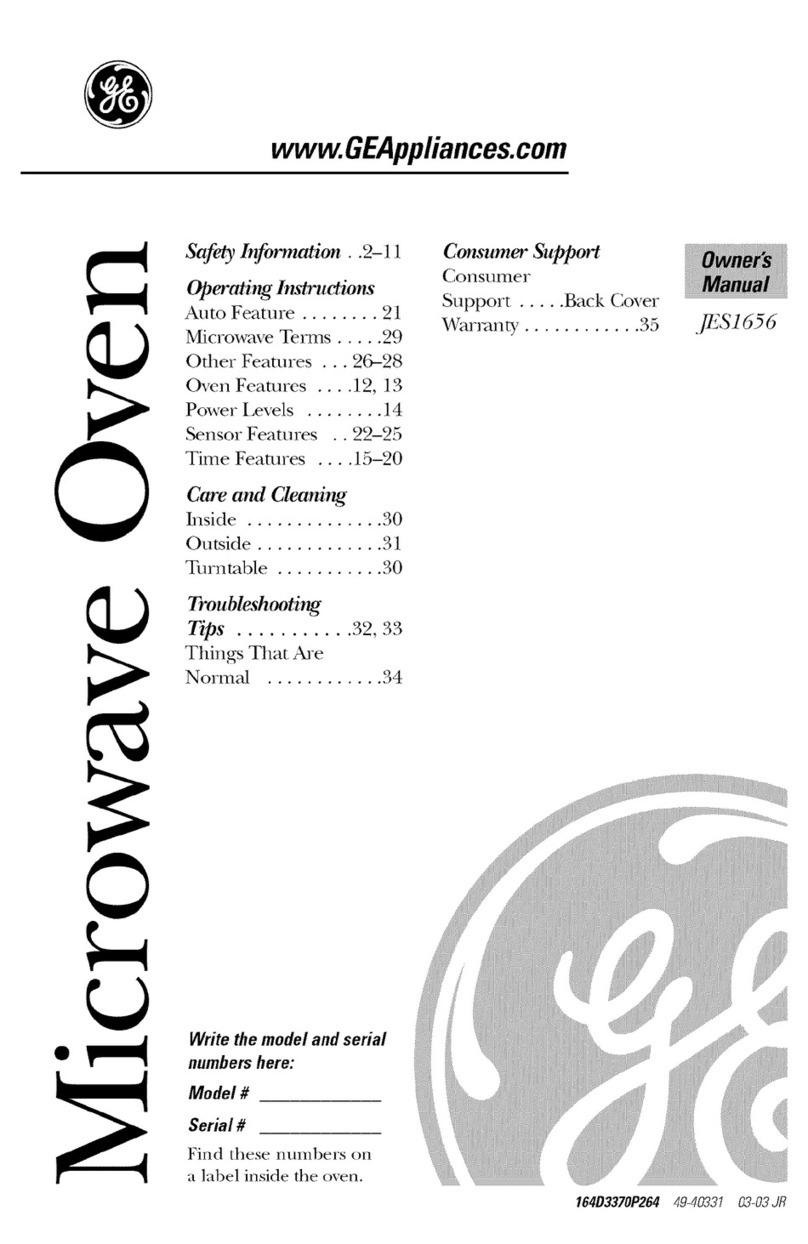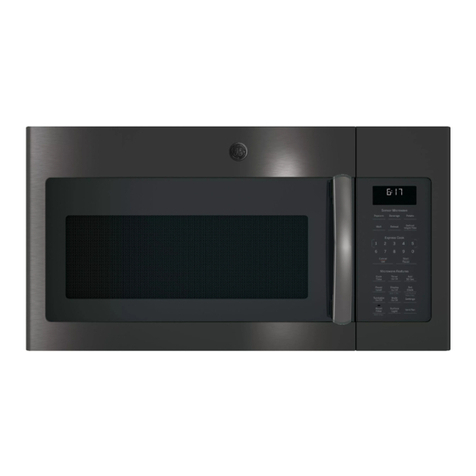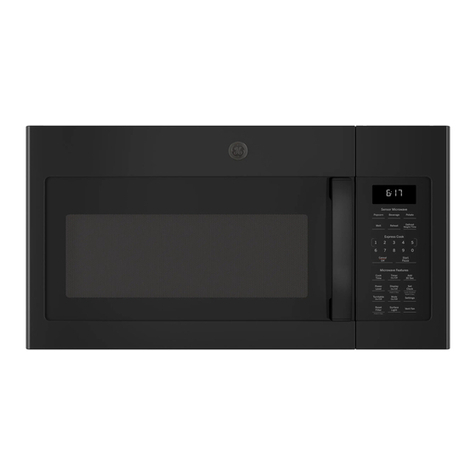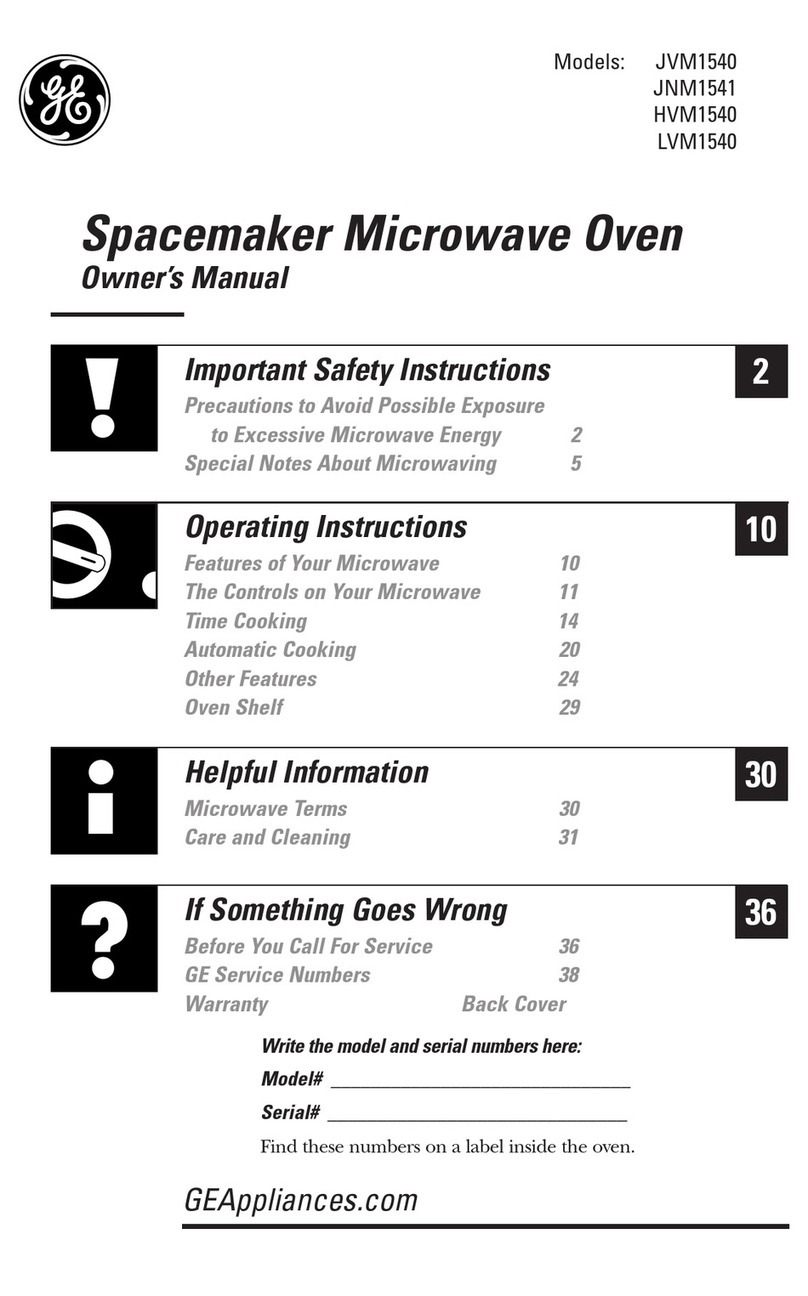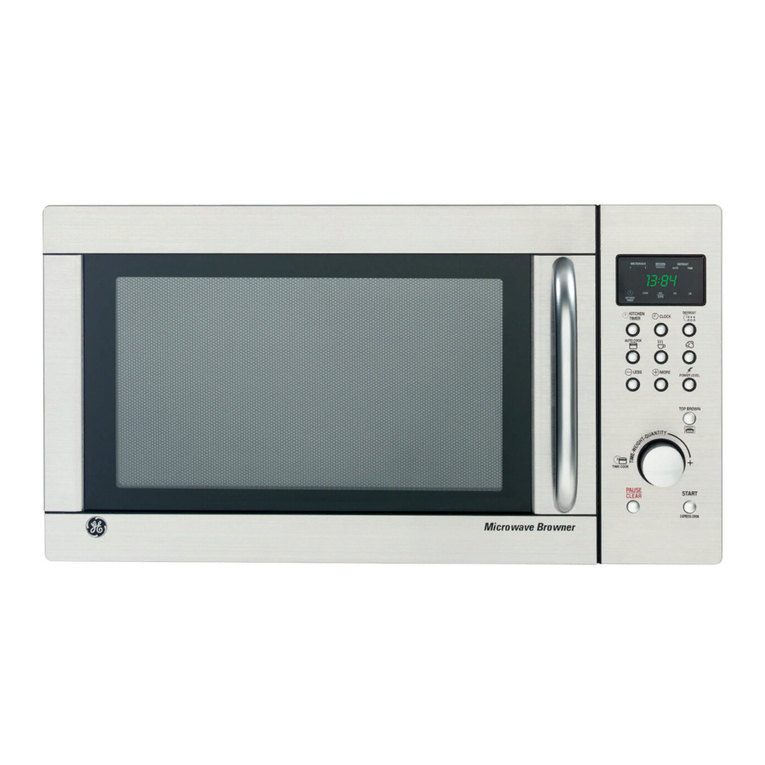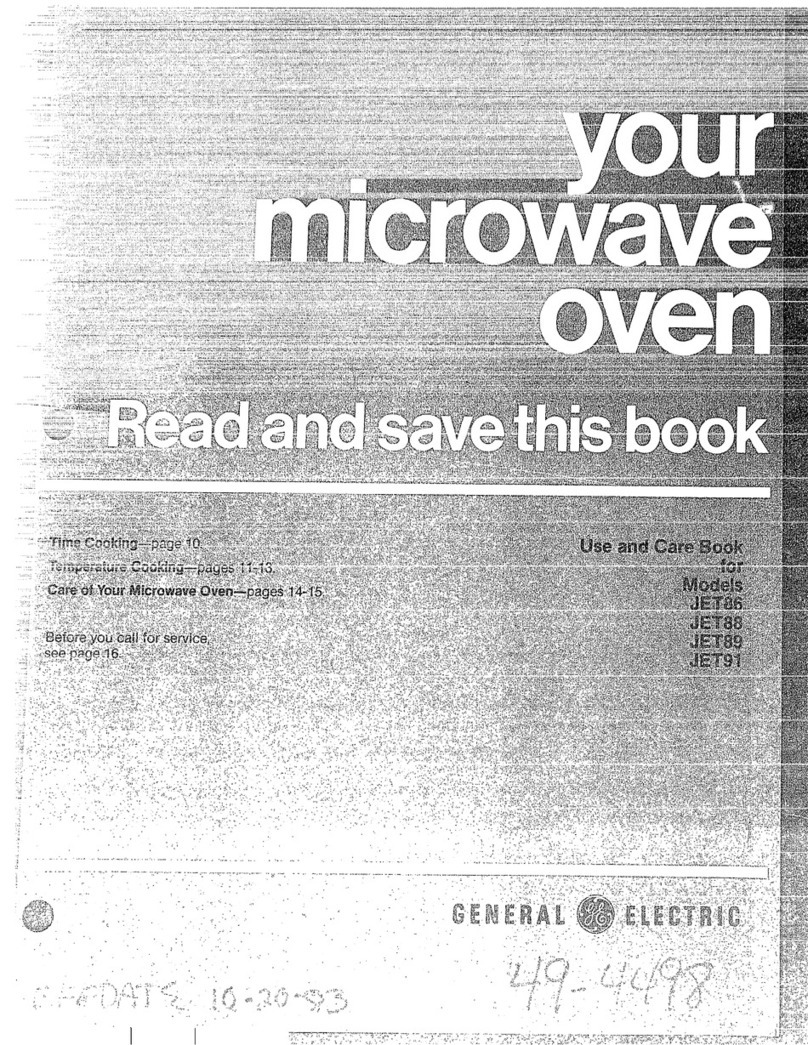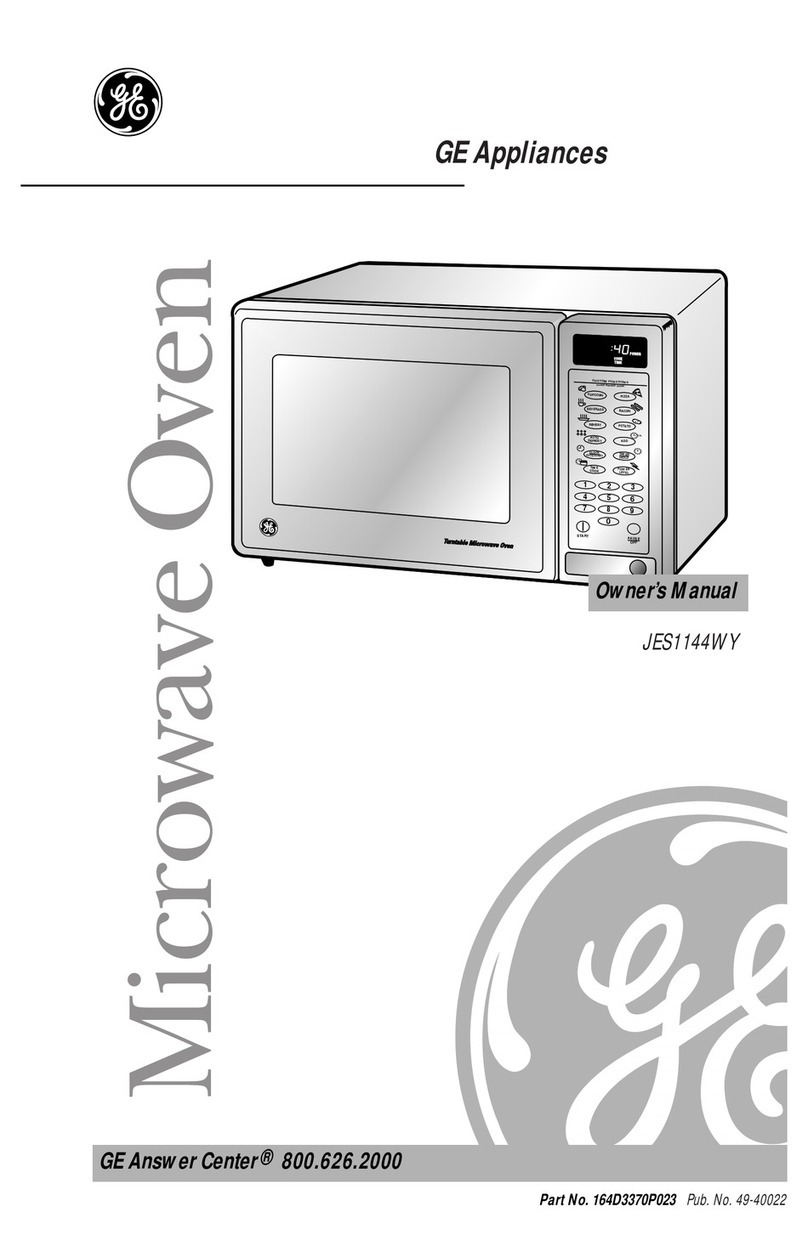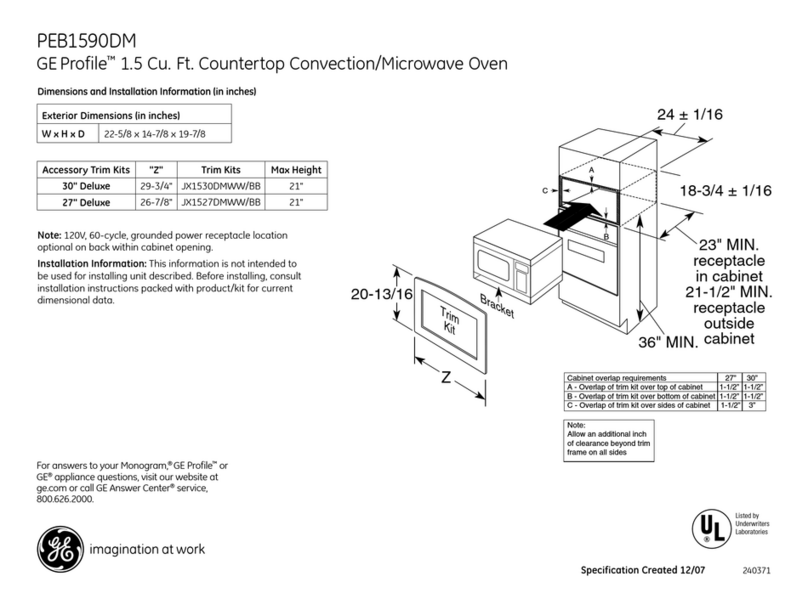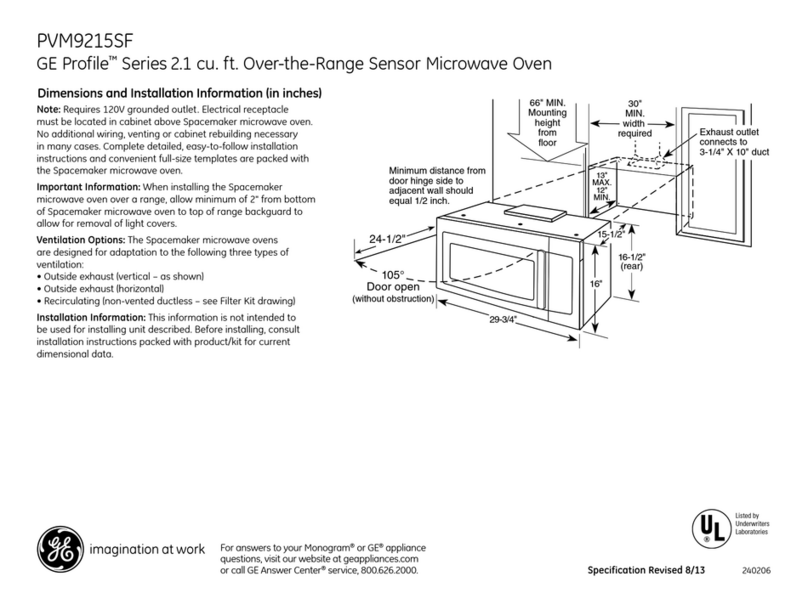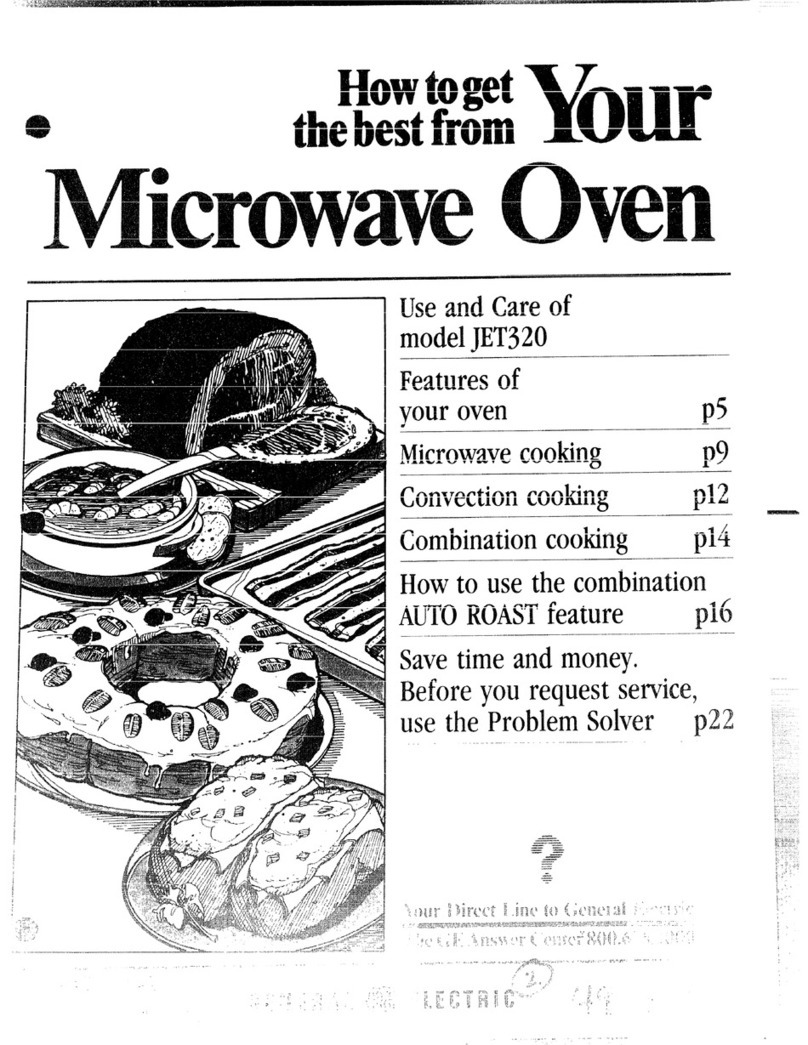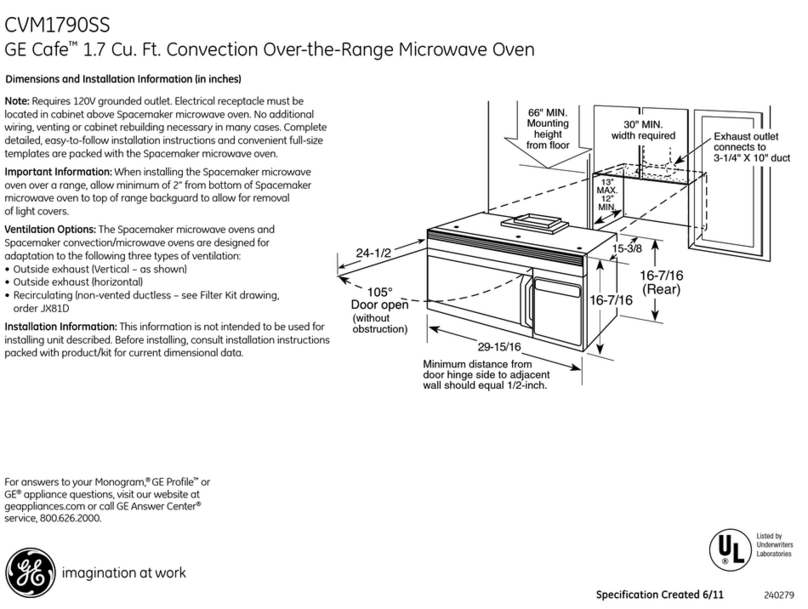GE Spacemaker JVM1530 User manual
Other GE Microwave Oven manuals
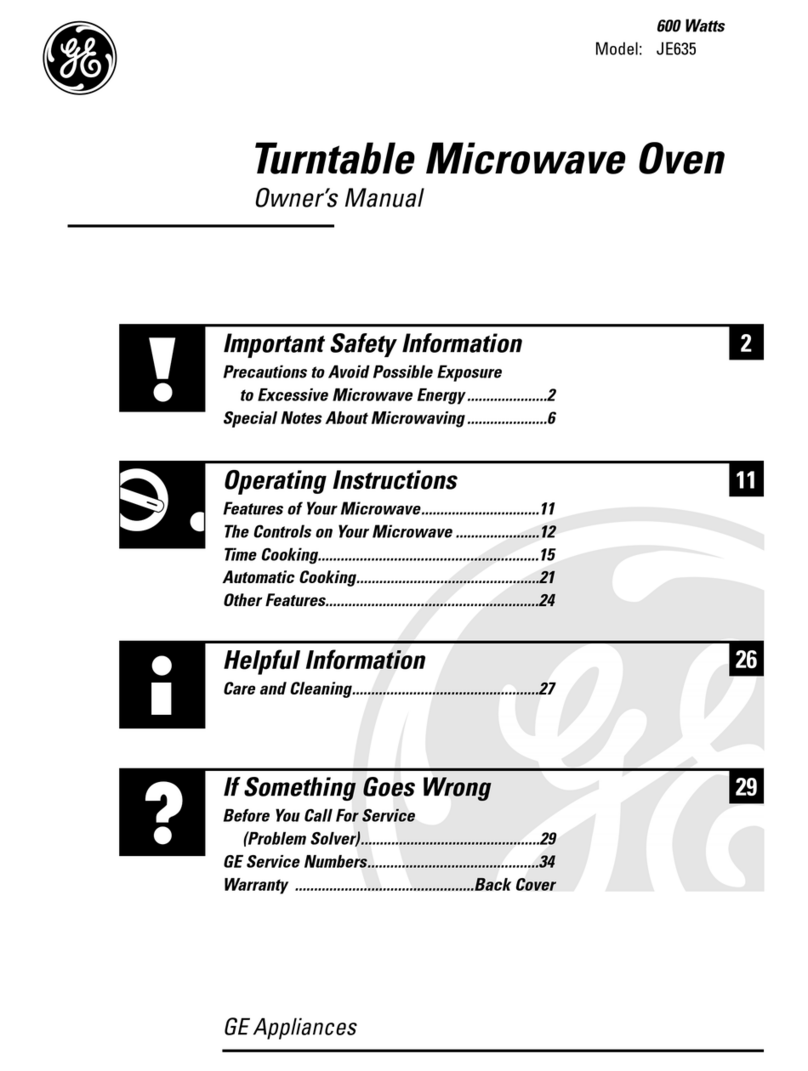
GE
GE JF635 User manual
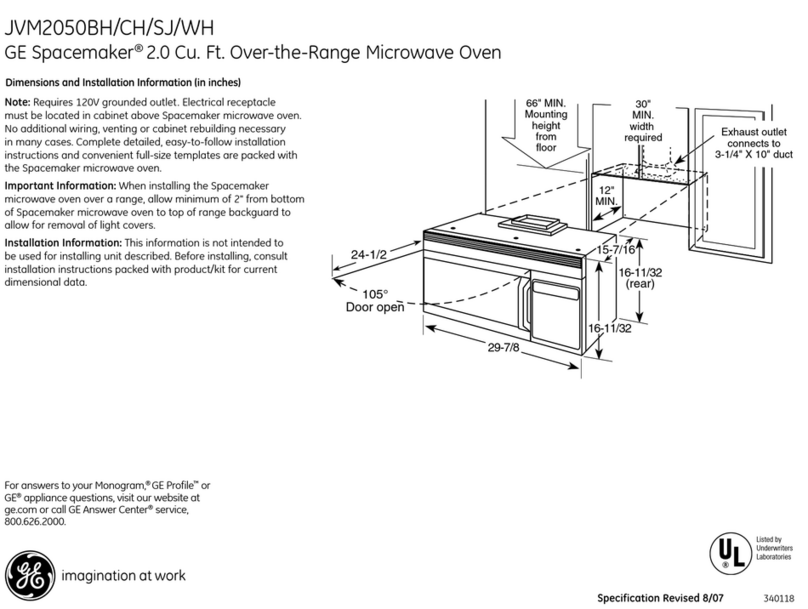
GE
GE Spacemaker JVM2050BH User instructions
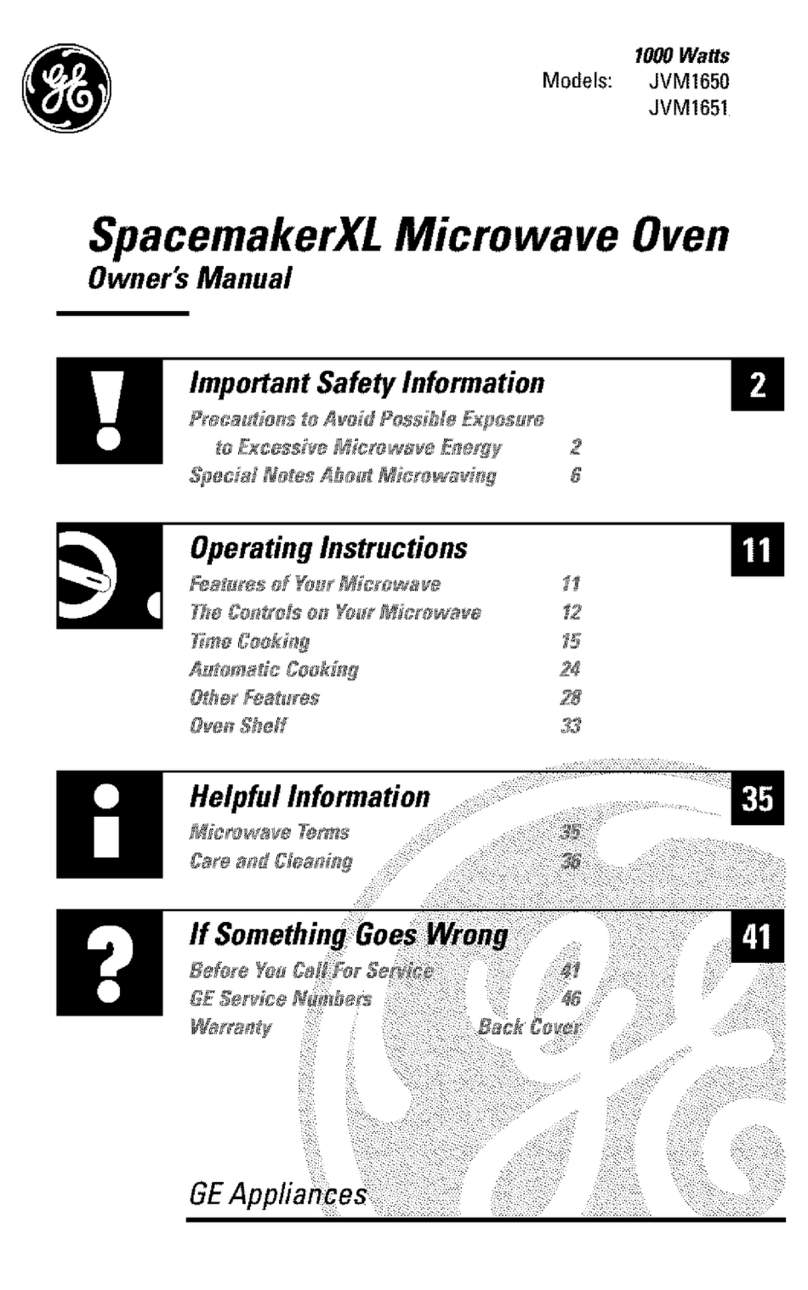
GE
GE Spacemaker JVM1650 User manual
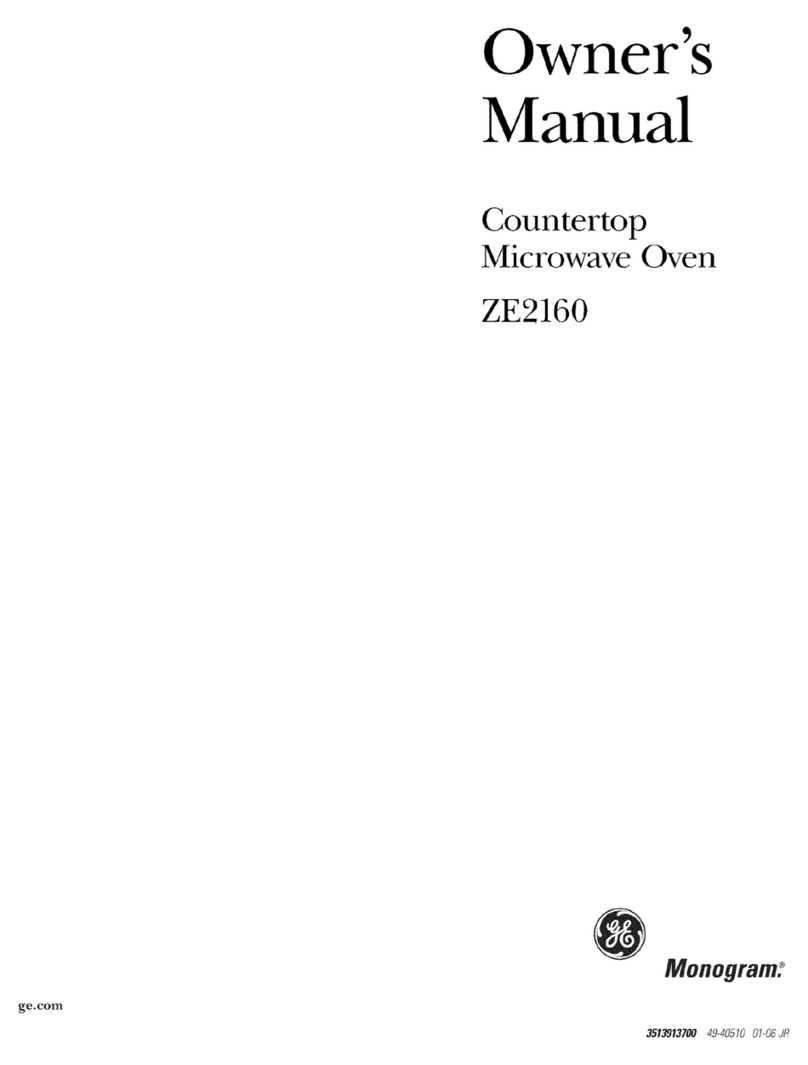
GE
GE Monogram ZE2160 User manual

GE
GE JET105 Installation instructions
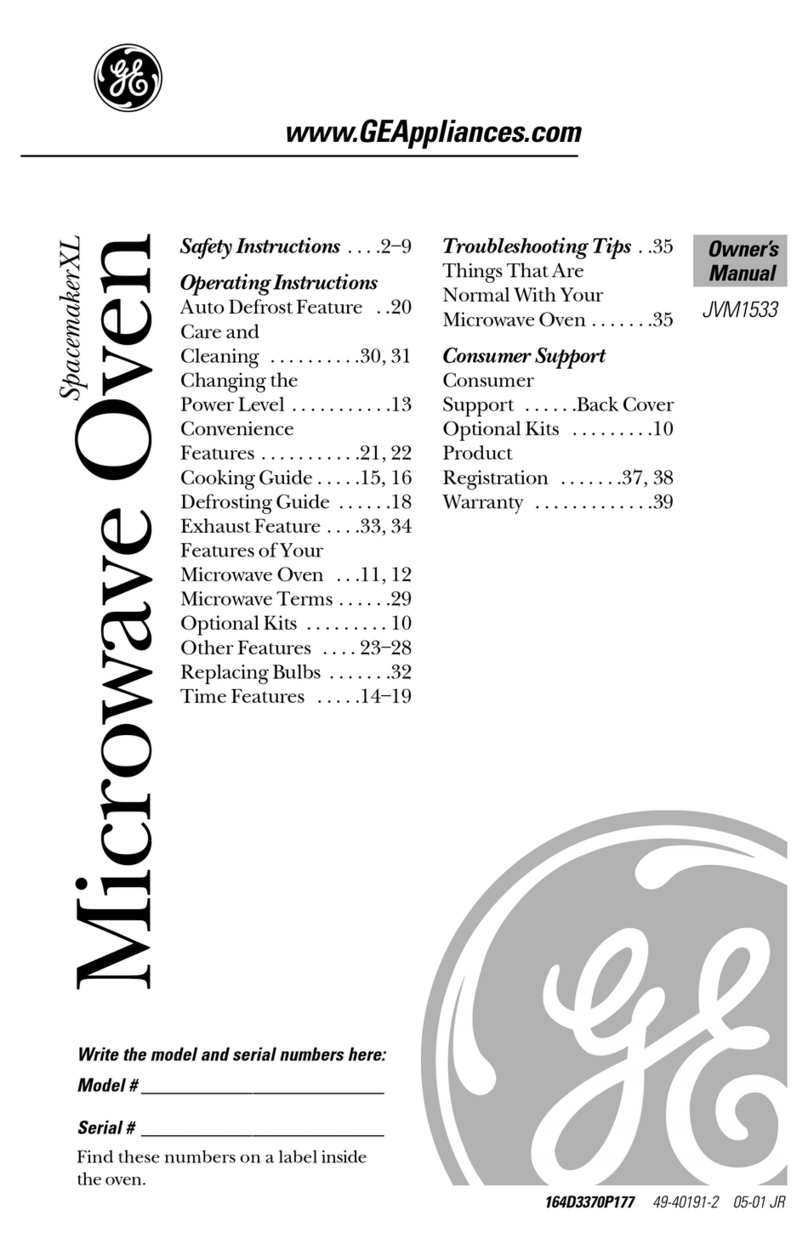
GE
GE SpacemakerXL JVM1533 User manual

GE
GE JE69A User manual
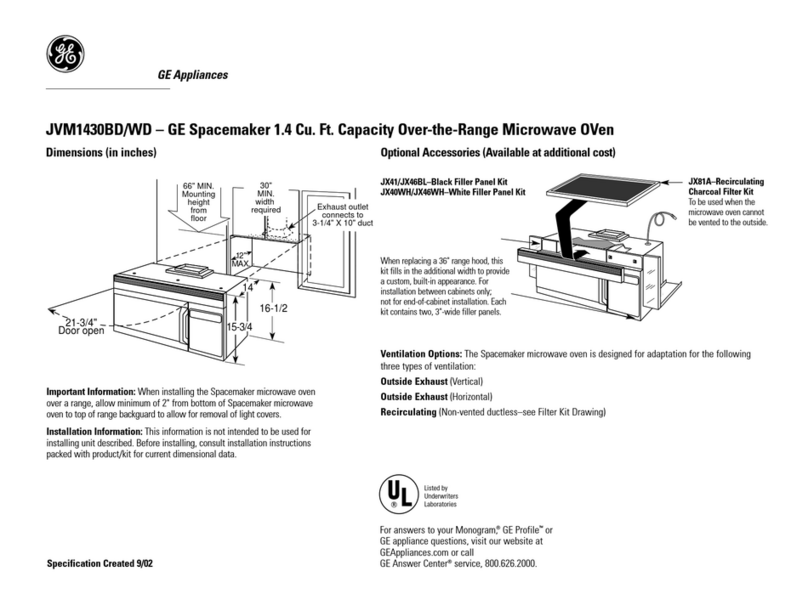
GE
GE Spacemaker JVM1430WD Manual

GE
GE JES1139 User manual
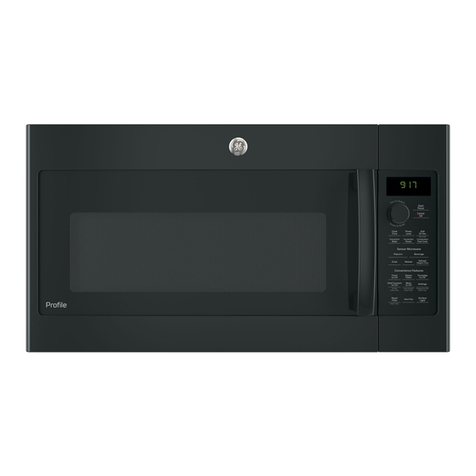
GE
GE PVM9179, PSA9120, PSA9240 User manual
Popular Microwave Oven manuals by other brands

Conrad Electronic
Conrad Electronic 2372935 operating instructions

DAEWOO ELECTRONICS
DAEWOO ELECTRONICS KOR-6L8K5S83 Operating instructions & cook book

DAEWOO ELECTRONICS
DAEWOO ELECTRONICS KOR-1N5A9S Operating instructions & cook book

Daewoo
Daewoo KQG-6617G Operating instructions & cook book

Samsung
Samsung M1779 Owner's instructions

Miele
Miele H6200BM(TB) Operating and installation instructions

Jocel
Jocel JMO011480 instruction manual

Sharp
Sharp R-752M Operation manual with cookbook

Electrolux
Electrolux EVL8E00X user manual

STOVES
STOVES Q900GRF DO User, installation & servicing instructions

Daewoo
Daewoo KOR-6L0B3S Operating instructions & cook book

KitchenAid
KitchenAid KCMS1555 Use and care guide

